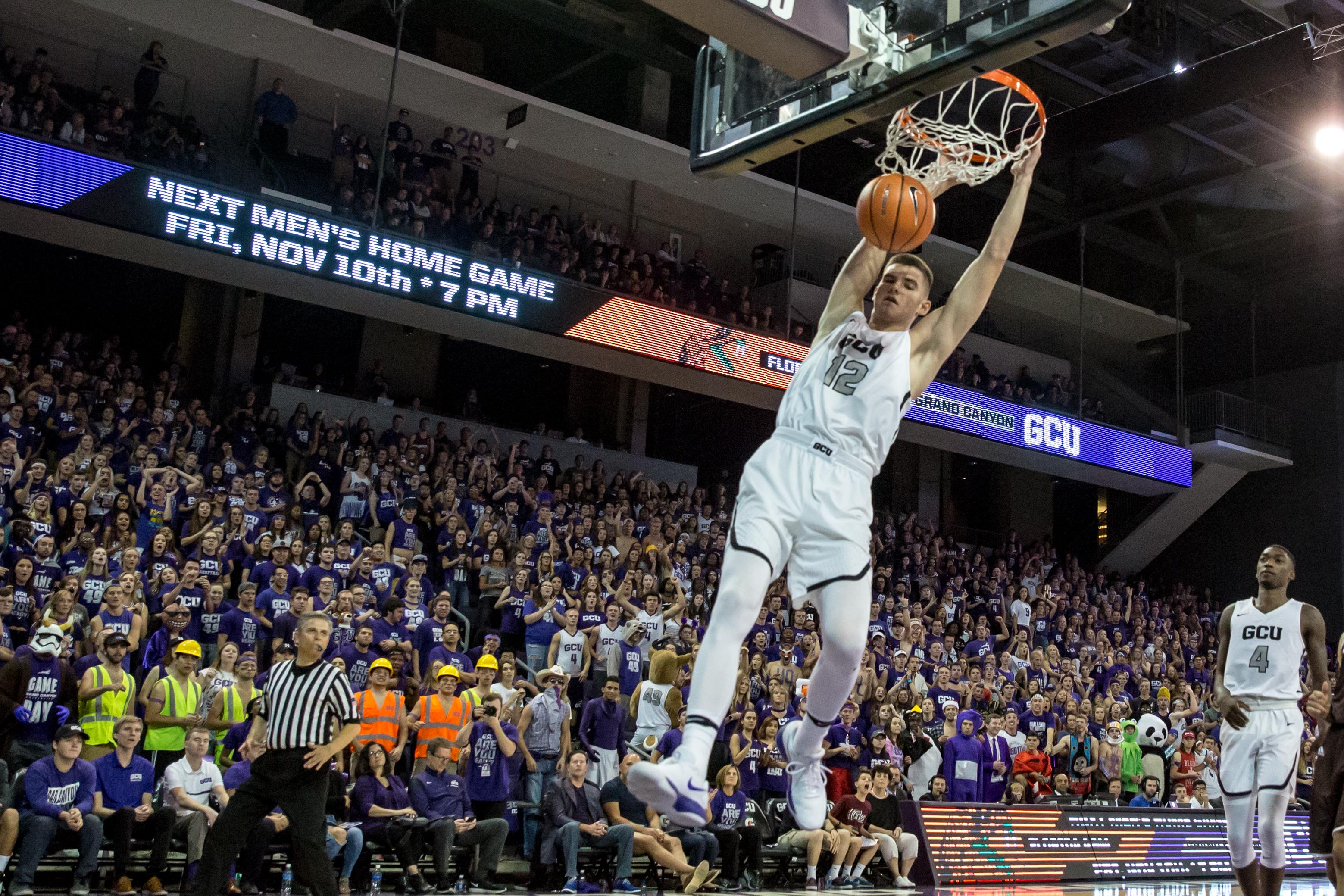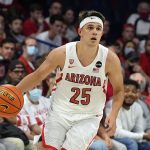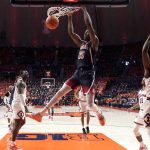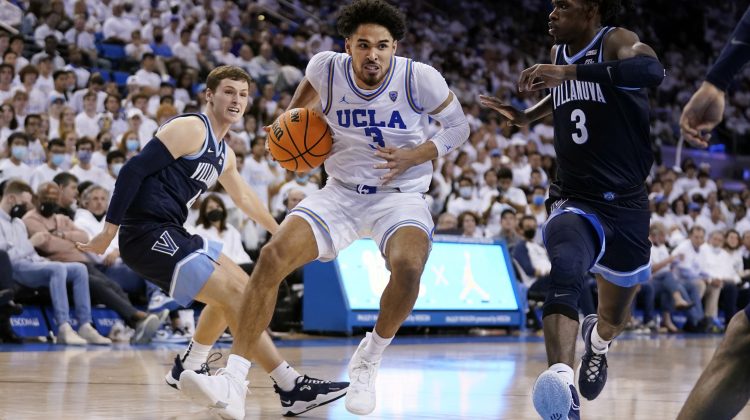The Pac-12’s representatives in the NCAA Tournament — all three of them — have fairly distinct playing styles, roster makeups, and coaching philosophies.
But Arizona, USC, and UCLA are quite similar in one telling regard: Their modest reliance on transfers.
The key players for each team were on the roster last March. The resulting familiarity undoubtedly played a role in the strong starts to the 2021-22 season — starts that laid the foundation for NCAA Tournament-worthy resumes.

Which brings us to a preliminary, unscientific, potentially flawed Hotline theory: Pac-12 basketball has become overly reliant upon the transfer portal.
We’ll dive into the evidence momentarily, but the essence of our discussion is the conflicting structure of the college basketball season itself. The weight placed on early-season results by the NCAA Tournament selection committee simply doesn’t mesh with the competitive challenges posed by the transfer portal.
In fact, the former runs completely counter to the latter.
Created in the fall of 2018, the transfer portal allows teams to overhaul their rosters more expediently than ever before, but the selection committee hasn’t tweaked the key metric at the heart of the process: The NET rankings are blind to the date of the competition. Results in November are treated the same as results in February.
In other words, there are no objectified means of accounting for the early-season inconsistency that follows significant roster changes.
But our theory is about more than the NCAA selection process. It’s about basic competitive success, both early in the season and throughout conference play. Cohesiveness and chemistry are vital to a successful season regardless of the ultimate destination (NCAAs, NIT, etc.)
Also, we should point out that Arizona, USC, and UCLA were not the only beneficiaries of roster stability. Colorado, the fourth-best team in the conference, made judicious use of the transfer portal.
Granted, those programs didn’t ignore the transfer portal when crafting their current rosters; several of their best players are transfers, in fact. But none of them went all-in with the portal as the foundation of their core rotation.
The Wildcats have three important transfers in Pelle Larson, Justin Kier, and Oumar Ballo, but they are role players. Each member of Arizona’s starting five was on the roster last season and entered the program from high school, not via the portal.
Three of UCLA’s top four players were high school signees. The exception, Johnny Juzang, transferred from Kentucky two years ago.
USC has three key transfers in Drew Peterson, Chevez Goodwin and Boogie Ellis, but only Ellis joined the roster this season. Coach Andy Enfield has leaned on the portal to complement, not supersede, his traditional recruiting efforts.
Colorado dabbles in the portal, but Tad Boyle rarely brings in more than one or two transfers season.
Meanwhile, Washington State’s starting backcourt emerged from the portal last spring.
Same with Washington’s perimeter unit.
Four of Utah’s top-five scorers weren’t on the roster last season.
Arizona State coach Bobby Hurley has relied on the portal the past two years and encountered issues with chemistry.
Oregon coach Dana Altman, the crown master of quick fixes, was unable to perform successful meatball surgery this year.
In fairness to those programs, coaching changes — and the resulting player exodus — often create an unavoidable dependency on transfers. By its very nature, the portal is an instrument of instability.
Also, it’s fair to consider causation. Are teams successful because they didn’t rely on transfers, or did they not need transfers because they were successful (i.e., limited flaws).
To be sure, we aren’t being critical of programs that have used the transfer portal to form the core of their rotations.
This is merely a preliminary Hotline theory, with a small sample size, and plenty of Hotline theories find their way to the dumpster.
But we wonder if the collective dependency on transfer should be reassessed — and perhaps reversed, to the greatest extent possible.
Because while the portal yanks the roster building process off its traditional moorings, the framework for determining the NCAA Tournament has remained utterly fixed.
Support the Hotline: Receive three months of unlimited access for just 99 cents. Yep, that’s 99 cents for 90 days, with the option to cancel anytime. Details are here, and thanks for your support.
*** Send suggestions, comments and tips (confidentiality guaranteed) to pac12hotline@bayareanewsgroup.com or call 408-920-5716
*** Follow me on Twitter: @WilnerHotline
*** Pac-12 Hotline is not endorsed or sponsored by the Pac-12 Conference, and the views expressed herein do not necessarily reflect the views of the Conference.
Related posts:
 Super Thursday in Las Vegas for Lopes, Sun Devils, and ‘Cats
Super Thursday in Las Vegas for Lopes, Sun Devils, and ‘Cats

Arizona guard Kerr Kriisa (25) (AP Photo/Rick Scuteri)
Wilner Hotline – Week One Pac-12 Basketball Power Ratings
(AP Photo/Charles Rex Arbogast)
Wilner Hotline – Pac-12 Hoops Early View of Selection Sunday
(AP Photo/Rick Scuteri)
Wilner Hotline – Pac-12 Rewind, It’s a Three-Bid League for NCAAs Unless…

